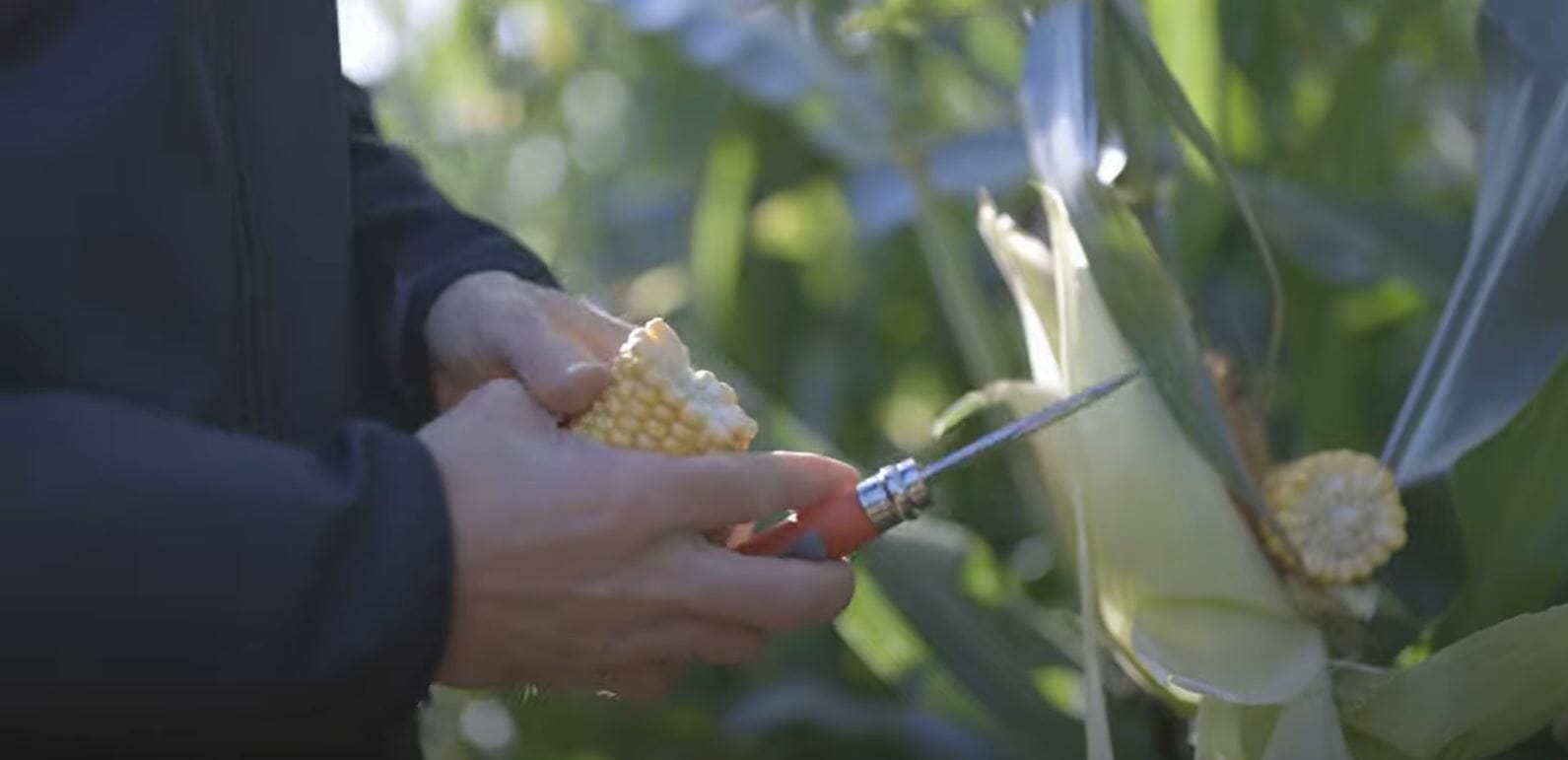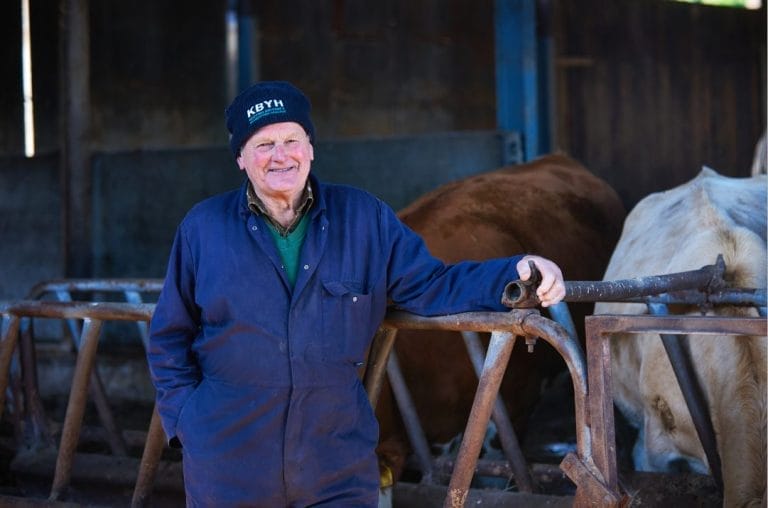This year’s crops may only just be in the clamp or feed trough, but Mr Richmond believes it will be important to select varieties for 2021 in the next few weeks.
“Recent advances in plant breeding mean there are real advantages in being more targeted in variety selection,” he comments. “At the same time, we are seeing an increasing range of selection criteria with agronomy and how varieties fit into rotations becoming a higher priority.”

Tim Richmond, Maize Manager
Mr Richmond suggests environmental pressures mean there is an increased need to ensure successor crops are established in the autumn to prevent stubbles being overwintered. At the same time undersowing maize with grass to provide cover shows signs of increased popularity.
He also points to the drive to maximise forage output per hectare per year which combined with multicut grass systems means more farmers are looking to sow maize after first cut, which can reduce the growing season with implications for variety choice.
“When these factors are added to the production goals of achieving a high yield of an energy rich, high quality feed delivering a good return on investment, selecting the right variety is even more important.
“The days of growing a variety because ‘it has always done well’ have been replaced with the need to select the best variety for the circumstances. In addition, it is important to make sure varieties can help reduce the risk of seasonal variation and you will want to make sure you have seed with the appropriate seed treatment.
Mr Richmond says the advances in maize variety breeding mean newer varieties offer a considerable financial advantage over earlier cultivars. He quotes an analysis of LG varieties that shows that over the last 17 years dry matter yield per hectare has increased by 20% or 2.98t/ha. At the same time, starch yield has been increased by 24%, equivalent to over an extra 1 t/ha and ME yield by 27% or an additional 43,750MJ/ha due to a combination of higher yields and superior quality.
“This extra energy is enough to produce an additional 8,200 litres per hectare delivering an exceptional return on investment from choosing the latest genetics.”
He warns that this year variety availability could be compromised depending on the form of Brexit arrangement which is implemented as all maize seed is imported. Making the selection soon and getting seed organised early could be a wise business decision.
With variety selection becoming increasingly complicated with a greater range of parameters to consider, Mr Richmond says it is crucial to make sure to use independent data to inform decisions, rather than just taking the breeders word for it.
He says the BSPB/NIAB Forage Maize Descriptive List is the industry standard. It organises independent Descriptive List testing for forage maize varieties, financed by the BSPB and managed by NIAB. It compares the major maize varieties grown in the UK marketplace across the key growing locations, with comparisons made on dry matter, yield, quality characteristics such as starch and energy and finally agronomic data incorporating five years of trials.
“It provides a good way to compare and sort varieties to develop a short list to meet your circumstances and varieties not on the list will probably not be worth growing.”
He advises selecting varieties based on a number of both agronomic and feed quality criteria. The first is maturity. How quickly do you want a variety to mature? Increasingly he says the market is moving towards varieties in the early and very early classifications as these varieties require fewer Ontario Heat Units (OHU) to reach maturity and are classified by having a lower FAO rating below FAO180. This means that they require only a short growing season to mature and also can be harvested sooner, in better conditions and ensure a successor crop can be established.
“To help identify suitable varieties for different parts of the country, our Maize Manager App uses Met Office data to show OHU accumulations by post code and provides an FAO recommendation for your location.”
Mr Richmond says that early varieties used to be associated with lower yields but comments this is no longer the case.
He advises selecting varieties with good early vigour as you want seed to germinate and get away quickly. He points out that the quicker the plant can start photosynthesising, the faster it will grow away.
Once varieties have been identified in the appropriate maturity class and your site class, the next key stage is to refine the list based on the yield and quality potential of the variety. Mr Richmond stresses the importance of focusing on quality because to maximise forage intakes you need varieties produce silage which encourages high intakes.
“With 50% of the total energy in maize contained in the vegetative parts of the plant, varieties combining high starch and high cell wall digestibility (CWD) should be chosen. Higher CWD results in a higher quality feed and encourages faster rumen throughput and higher intakes.
“The overall objective should be to select varieties that will mature at a time to suit the farm and rotation and produce the yields of quality forage to optimise return on investment (ROI).”
The difference in return on investment can be considerable and using BSPB/NIAB data, The LG Maize Manager App allows varieties to be ranked on this basis. He says early maturing varieties combining good starch and Cell Wall Digestibility will drive productivity per hectare.
 He says the data show that new varieties deliver a substantial financial benefit. The variety Prospect for example is maturity class 9 / FAO170 but is above average for dry matter yield across all varieties on the BSPB/NIAB List. It has exceptional CWD combined with high starch and will produce 210,095MJ/ha, enough to produce 39,808 litres which is 2082 litres more than average.
He says the data show that new varieties deliver a substantial financial benefit. The variety Prospect for example is maturity class 9 / FAO170 but is above average for dry matter yield across all varieties on the BSPB/NIAB List. It has exceptional CWD combined with high starch and will produce 210,095MJ/ha, enough to produce 39,808 litres which is 2082 litres more than average.
Conclusion is a first-choice variety on this year’s BSPB/NIAB list and with an FAO190 is still early maturing, ensuring a timely harvest. It out-yields all earlier varieties on both ME and dry matter, supporting 2432 litres/ha more than average
Whatever variety is selected, Mr Richmond stresses the need to ensure an appropriate see dressing is used. He says that Korit will remain the only registered bird repellent.
He comments that bird repellents are only needed where bird damage will be a problem but says there remains considerable interest in seed dressings that also help the crop get established.
“For example, Korit Pro combines the bird repellent effect with trace minerals to stimulate root growth and function and a fungicide to prevent root damage caused by rhizotonia. So, it will be important to find out what dressings are available on your variety of choice.
“Making a decision soon based on the latest data will help ensure that the maize you grow fits your farming system and will deliver the best return on investment while helping meet the increased environmental pressures being faced,” he concludes.
Download the Maize Manager App today, select your app store:




































